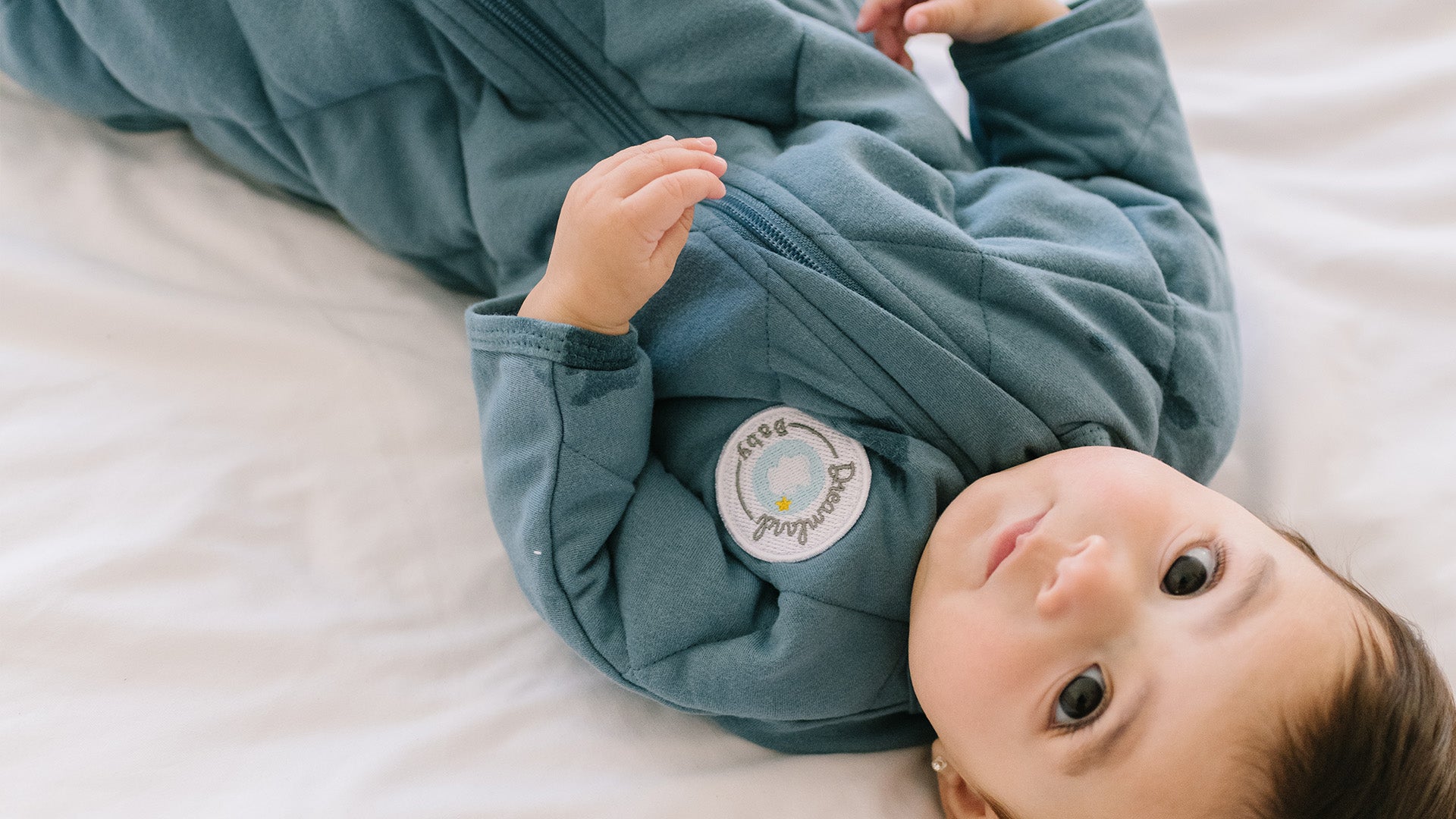Understand The Best Timing And Purpose For Using A Transitional Swaddle.
Eventually, your baby will be ready to transition out of a newborn swaddle. The thought of this may exhaust you as you wonder how you will get them to sleep and make a smooth transition. The answer? A transition swaddle. Transition swaddles are designed to make transitioning out of a swaddle to a blanket less stressful and easier.
Keep reading to learn more about transition swaddles and how to use them.
What is the purpose of a transition swaddle?
Transition swaddles are designed to help your baby graduate from a swaddle to a blanket. Rather than unswaddling them all together, they simply change how they are swaddled while keeping them safe. As your baby begins to roll over, they can kick off a newborn swaddle, which can present a safety hazard. This is where a transition swaddle comes in.
A transition swaddle is designed to allow them to move their arms and legs freely, but it wraps around the body to provide the baby with relaxing comfort. Weighted swaddles and transition swaddles can provide even more comfort as they are proven to create a sense of security and calmness.
Why are transition swaddles important for helping your baby sleep?
If you have a little one in the house, you know how important a good night’s sleep can be for your baby, yourself, and your family. A swaddle provides a womb-like experience that helps your child, and subsequently, everyone in the house, get the restful sleep they need.
As a baby gets older, they will want to kick their feet and arms around and they won’t want the swaddle to restrain them. But, they will still want the womb-like comfort a swaddle provides. A transition swaddle wraps loosely around their legs so they can kick them around.
It also allows the arms to move freely. It may also feature hand covers and weighted sleeves that will keep babies from scratching themselves and prevent the Moro reflex. This also contributes to a good night’s sleep.
How are transition swaddles different compared to regular swaddles?
There are a variety of differences between the transition swaddle and the regular swaddle, including. . .
- Design: The design is the biggest difference between transition and regular swaddles. A regular swaddle will fit tightly around the baby’s body and keep the arms and legs in place. A transition swaddle fits loosely around the legs and does not restrain the arms offering optimal movement.
- Size: Babies that are ready for a transition swaddle are older than babies that use a regular swaddle. Therefore, a transition swaddle will come in larger sizes.
- The blanket factor: Swaddles can be premade, or parents can simply fashion blankets into a swaddle. However, a transition swaddle must be specially designed to allow for leg and arm movement. It cannot be made from a blanket. Need to order a transition swaddle? Shop Dreamland now.
Can babies go straight to sleep sacks after swaddling?
Babies can go straight to sleep sacks after swaddling. However, there are some signs that will tell you your baby is not quite ready for a sleep sack. Here are some indications.
Your baby is not sleeping through the night: If your baby is not sleeping through the night in the sleep sack as soundly as they were sleeping in their swaddle, they may need the extra security that a Transition Swaddle has to offer.
Your baby is scratching themselves or startling awake: Unlike sleep sacks, most transition swaddles have features that prevent a baby from scratching themselves or startling themselves awake in the middle of the night. If your child is startling awake or scratching themselves while in their sleep sack, you may want to try a transition swaddle.
Your baby is not used to the sleep sack: A sleep sack may have a very different feel for your baby. If they are not used to it, they may cry when you put them in it. A transition swaddle is closer to a swaddle in terms of design, thus making it a tool for transitioning your baby to a sleep sack.
How do you know when a baby is ready to transition out of the swaddle?
Your baby will be ready to transition out of the swaddle when it starts rolling over. At this time, it will want to move around more, and it will become frustrated by the restricting fit of a swaddle.
Babies start rolling over at different ages. Some start as early as 2 months while some start as late as 6 months. Most will start at around 3 or 4 months and will be able to fully roll over by 6 months.
When your baby can fully roll over, it will be time to transition to a sleep sack.
Why do weighted swaddles help babies fall and stay asleep?
Weighted swaddles provide a sense of comfort, so babies feel more secure.
We encourage parents to try weighted swaddles and sleep sacks to help their baby’s get longer, better sleep. The idea of weight on your baby may be new to you but rest assured that Dreamland takes pride in every detail of our mom-created sleep solutions. With more than 100,000,00o sold and hours of sleep given to families, Dreamland is the master of sending babies to Dreamland.
Our Weighted Transition Swaddle features CoverCalm technology that provides your baby womb-like comfort as they sleep. Our transition swaddle features ¾ length gently weighted sleeves that fit snugly to help reduce the Moro (startle) reflex. Weighted blankets are proven to calm your baby with Deep Pressure Stimulation so they can relax and sleep soundly. Dreamland’s Transition swaddle is made with premium materials that are lightweight and breathable, so they can be used year-round.



Share:
What Are The Differences Between Transition Swaddles & Regular Swaddles?
What Comes After The Transition Swaddle?